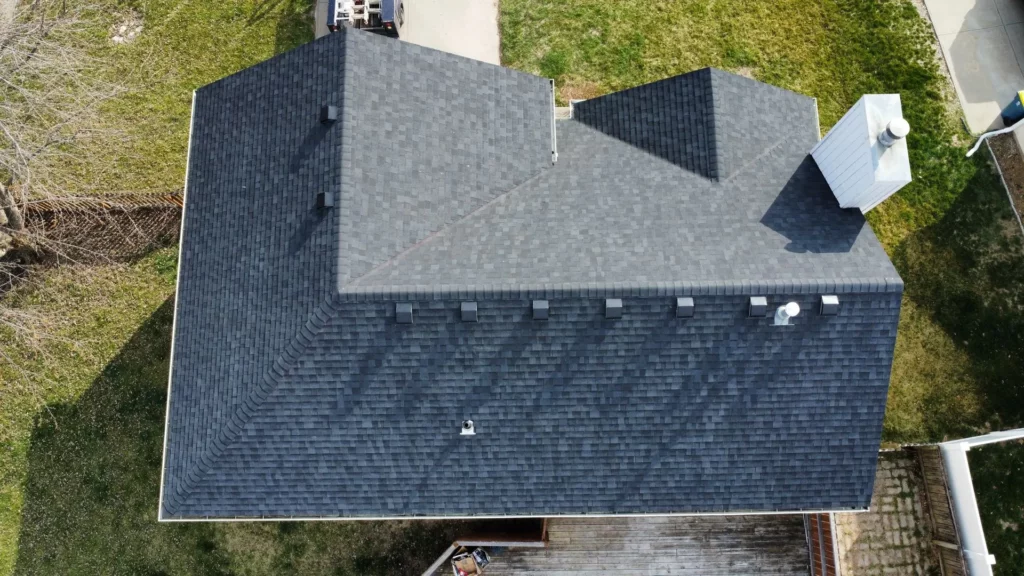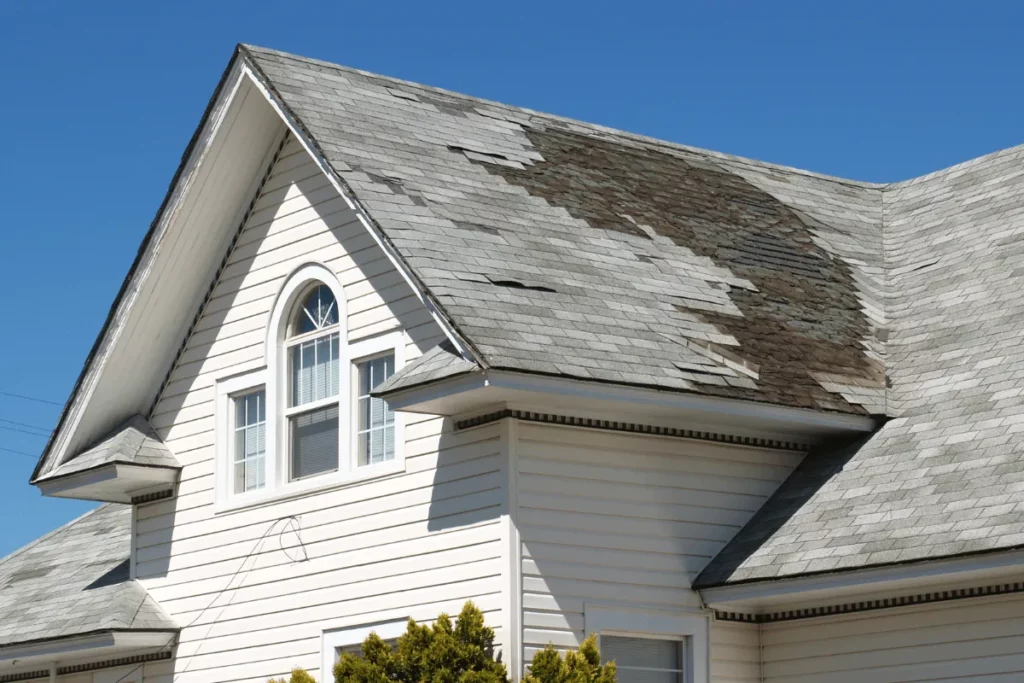Proper roof ventilation is one of the most overlooked yet critical components of a healthy home. While many homeowners focus on the visible aspects of their roofing system, what happens beneath those shingles can significantly impact your home’s longevity, energy efficiency, and overall comfort.
Understanding what roof ventilation is and how it works is the first step toward protecting your sanctuary and ensuring your home remains comfortable year-round.
Wondering what roof ventilation is and which types of roof vents are right for your home? Cloud 9 Roofing has the answers! Our expert team specializes in custom roofing solutions that protect your home and reduce energy costs. Call 816-226-2311 today for a roofing assessment and breathe new life into your roof with Kansas City’s most trusted roofing professionals.
Understanding Roof Ventilation: What is Roof Ventilation?
Roof ventilation refers to the systematic exchange of air in your attic or roof space. This continuous flow of air regulates temperatures and moisture levels throughout your home. A well-designed ventilation system creates a pathway for fresh air to enter your attic space (intake) and for stale, hot, or humid air to exit (exhaust).
At its core, roof ventilation is about balance. When properly implemented, it creates a consistent flow of air that helps maintain optimal conditions in your attic regardless of external weather conditions. This balance is crucial for preventing a host of problems that can affect your roof’s integrity and your home’s overall efficiency.
Why Proper Ventilation Matters
Proper roof ventilation is absolutely critical for your home’s health. When airflow is insufficient, your attic can become a perfect environment for serious issues that affect your entire house. Excess moisture can start to accumulate, creating ideal conditions for mold, wood rot, and deterioration of insulation.
In winter, poor ventilation can cause ice dams that damage roofing materials and lead to leaks. During summer months, inadequate ventilation allows heat to build up, forcing your air conditioning system to work harder and driving up energy costs. By investing in proper roof ventilation, you’re not just protecting your roofing materials—you’re safeguarding your entire home against potential structural damage while improving energy efficiency and indoor comfort. After all, what is roof ventilation if not the lungs of your home?
[Related: How to Prevent Ice Dams]
What is Roof Ventilation: How It Works
Roof ventilation operates on two fundamental principles: the stack effect and the wind effect.
The stack effect occurs when warm air naturally rises and escapes through upper vents, creating negative pressure that draws cooler air in through lower vents.
The wind effect happens when the wind blows across the roof, creating areas of high and low pressure that facilitate air movement through the ventilation system.
For optimal performance, a roof ventilation system requires a careful balance between intake and exhaust vents. Industry standards typically recommend a ratio of 1:1, meaning the square footage of intake ventilation should equal the square footage of exhaust ventilation. This balance ensures efficient airflow without creating pressure imbalances that could compromise the system’s effectiveness.
What is Roof Ventilation: Signs of Poor Ventilation
Recognizing the warning signs of inadequate roof ventilation can save you from costly repairs later down the line. Here are key indicators that your current ventilation system may be falling short:
- Excessive heat in your attic space, particularly during the summer months
- Formation of ice dams along roof edges during winter
- Visible mold or mildew growth in attic areas
- Unusually high energy bills without other explanation
- Warped or damaged roofing materials, especially along the roof deck
- Peeling paint or wallpaper inside your home, particularly on upper floors
- Damp or wet insulation in the attic
If you’re experiencing any of these issues, it’s time to evaluate your roof ventilation system. At Cloud 9 Roofing, we offer comprehensive roofing services that include a ventilation assessment to identify potential problems before they escalate into major repairs.
Types of Roof Vents: Find the Perfect Match
Understanding the various types of roof vents is crucial for creating an effective ventilation system. Each type serves a specific purpose, and the right combination depends on your home’s design, local climate, and specific ventilation needs.
Intake Vents
- Soffit Vents: These are installed on the underside of your roof’s overhang (the soffit) and serve as the primary intake component in most ventilation systems. They allow fresh, cool air to enter the attic space at the lowest point of the roof.
- Fascia Vents: These are installed along the fascia board, which runs along the lower edge of the roof. These types of roof vents are particularly valuable for homes with limited or no soffit space, providing an alternative intake solution.
- Drip Edge Vents: These vents represent an innovative solution for intake ventilation, particularly for homes where traditional soffit ventilation isn’t feasible. Installed along the roof’s edge, these vents integrate with the drip edge flashing to provide a discreet yet effective intake system.
Exhaust Vents
- Ridge Vents: One of the most popular and effective types of roof vents for exhaust ventilation. Installed along the entire peak of the roof, they provide a continuous outlet for hot, moist air to escape from the attic.
- Static Vents: Also known as box vents or turtle vents, static vents are simple, non-moving exhaust vents installed near the ridge of the roof. These types of roof vents rely entirely on natural convection and wind to remove hot air from the attic.
- Wind Turbines: Adds a mechanical element to roof ventilation, using wind power to enhance air extraction from the attic. These distinctive vents boast a series of curved vanes that spin when exposed to wind, creating a vacuum effect that pulls hot air out of the attic.
- Power Vents: Represent the most active approach to roof ventilation, using electric motors or solar power to forcibly extract air from the attic. These vents typically include thermostats or humidistats that activate the fan when attic temperatures or humidity levels exceed preset thresholds.
- Cupolas: Combines architectural charm with functional ventilation. These decorative structures sit atop the roof and feature louvered openings that allow hot air to escape. While primarily chosen for their aesthetic contribution, cupolas do provide supplemental ventilation when properly designed and installed.
At Cloud 9 Roofing, our team is trained to install ventilation properly, ensuring your ventilation system performs optimally from day one. Our comprehensive approach includes careful planning, precise installation, and thorough testing to verify proper airflow through your attic space.
Contact Cloud 9 for Expert Roofing Solutions
Proper roof ventilation represents one of the most valuable yet often overlooked investments you can make in your home. By understanding what roof ventilation is and implementing the right combination of types of roof vents, you’re taking a proactive step toward extending your roof’s lifespan, improving your home’s energy efficiency, and preventing costly structural damage.
Don’t leave your home’s health and efficiency to chance. Contact Cloud 9 Roofing today at 816-226-2311 to schedule expert roofing solutions to keep your home comfortable, efficient, and protected for many years.


